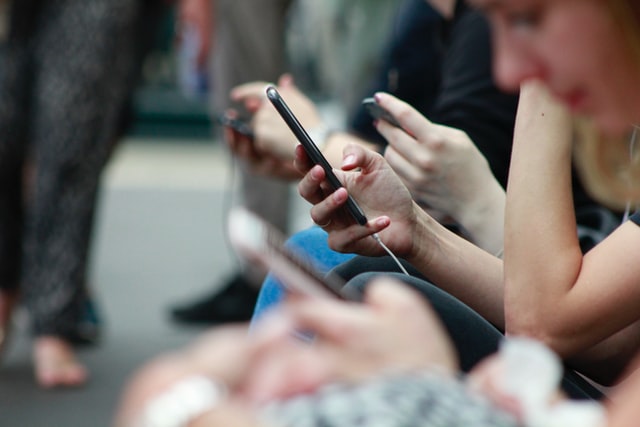If you maintain a social media presence across several sites, then you probably understand the challenge of letting go.
Most people experience a desire, at some point during their social media lifespan, to reclaim their time. They may cancel an account with Facebook, or take a digital break (a.k.a. a “digital detox”), but in the end most people themselves back online, posting more than they did before.
Why is social media so successful at keeping users active?
Studies carried out over the past 5-7 years illustrate several habit-forming qualities of social media. Like its television, radio, and newspaper predecessors, social media leverages psychological triggers for which people exhibit certain behaviors when presented with rewards and perceived value. These behaviors result in an increased frequency of use of the medium.
Unlike its predecessors, however, social media app designers found a way to encourage entice visitors to stay and provide rewards within a single sitting, making it more challenging to stay away.

So which qualities keep folks coming back for more? The below outline four aspects of social media that influence how and why we continue to post on our social media profiles. When brands and business owners better understand the psychology behind why and how people leverage different platforms, they can advertise their content in a more meaningful way, more likely to resonate with prospects online.
On the same note, if brands and businesses neglect to better understand the evolving channel, they will miss opportunities to advertise and market themselves using new features and formats introduced on these platforms. Social media is constantly changing, which means it’s essential for businesses to continue to educate themselves on the age demographics and formats that appeal to their target prospects. In fact, eMarketer forecasts US social network video ad spending to grow by nearly a third (31.0%) YoY to $19.22 billion within 2021 alone.
The 4 Qualities of Social Media that Keep People Active
This next section walks through each element of social media’s underlying UX experience built on psychology that encourages habitual use and frequency of posts. It’s definitely encouraged that business owners continue to use social media in their own day to day in order to better understand the evolution of each platform and the user experience, as these social media tools tend to evolve quicker than their other media counterparts.
Habit Formation
In a recent study conducted by Ian A. Anderson and Wendy Wood from the University of Southern California, Twitter and Facebook users were asked a series of questions to test their habitual use of each social media site. Both researchers found that the frequency with which participants posted on either site was related to the automaticity with which they posted.
In other words, there was a statistically significant relationship between how often participants posted, and whether they did so without thinking. The idea of a frictionless experience cannot be understated here. As a business owner or marketer, you need to ensure your user experience allows for a flawless experience between content. This includes the experience cross-channel as well. Think of how many times you jumped from a social media post to a link embedded in the copy, to another blog article on that same site. Ensure your content leads into each other to keep your reader and follower engaged.
Social Peer Pressure
It’s easy for us to understand that when a familiar or trustworthy source advocates a product or website, we feel comfortable participating in its use because of our trust with the source. This is why word-of-mouth and influencer marketing is so impactful.
Taken to a more extreme, our trusted networks can also push us in the direction of taking action we may not have without outside influence. Something to keep in mind for your marketing efforts: while you cannot make something become viral on social media, you can plan for word of mouth. Built In discusses word-of-mouth marketing with helpful examples to make something considered “buzzworthy,” increasing the chances that your brand will be communicated to people’s personal networks.

As Facebook grew in popularity, new features like Facebook Events allowed users to create exclusive forums to coordinate personal events, share content, and react in one place. As more people turned to Facebook for work and business event planning, the pressure for individuals to join the site increased.
Reward Principle
Rewards on social media take the form of what you see in your feed. According to the study by Anderson & Wood, scrolling through your social feed increases the uncertainty of the content reward (what type of content will appear), adding to the surprise element and piquing the user’s interests.
This is why social sites like Facebook, Twitter, and Instagram are designed with an infinite scroll feature (to keep you looking for that next dopamine hit). It’s very hard to stop doing something when it starts to trigger feelings of pleasure, that’s why strategically designing your online experience to mimic social media’s infinite scroll features (i.e. on your blog) is likely to keep new site users engaged by reading additional content.
Reciprocity Effect
An understated psychological trigger on social media was taken directly from the playbook of many a salesperson marketer alike: reciprocity.

In a 2015 study conducted by Sanghee Oh and Sue Yeon Syn from Chungnam National University and the Catholic University of America, this reciprocity effect “heightens pressures to reciprocate by reading others’ posts” after someone engages with your content. This feeds back to the infinite loop of social media engagement.
What Do We Takeaway From This?
As marketers, it is our responsibility to engage social media ethically when promoting to consumers online. While there are obvious psychological triggers that contribute to the success of social media as a channel, we must hold ourselves and our professional communities accountable to avoid the exploitation of bad practices.
On a positive note, this means there is a world of opportunity for businesses to leverage social media as a means to promote relevant and helpful content with online communities, reaching more people in inexpensive ways. The result is enhanced engagement and trustworthiness with prospects.
Your brand reputation is everything, so be sure your online practices reflect strong, ethical standards. Remember: what happens on the internet stays on the internet.
If you’re interested in learning more, read How to Conduct Really Easy #Hashtag Research and 3 LinkedIn Lead Gen Tools Ideal for B2B Companies to Market Themselves for best practices on how to write compelling social copy.
Featured photo by Brett Jordan on Unsplash

